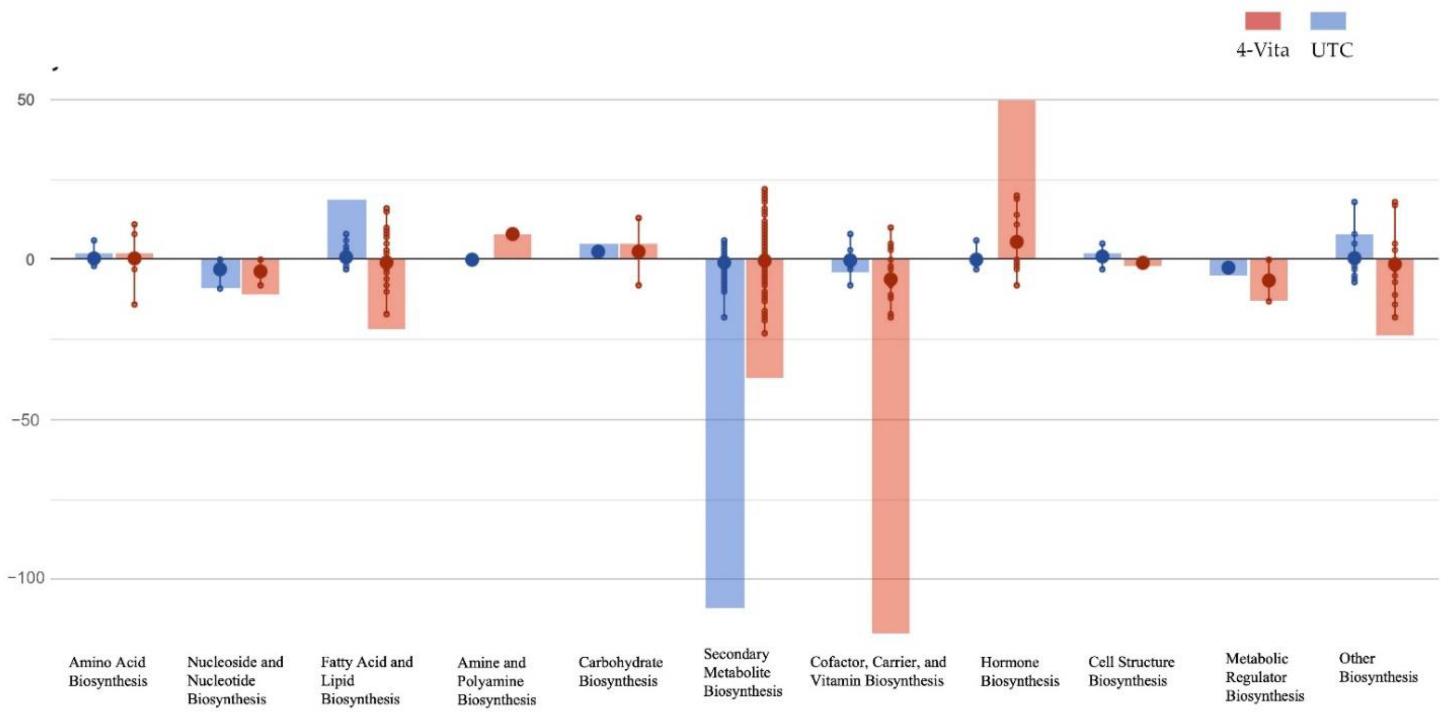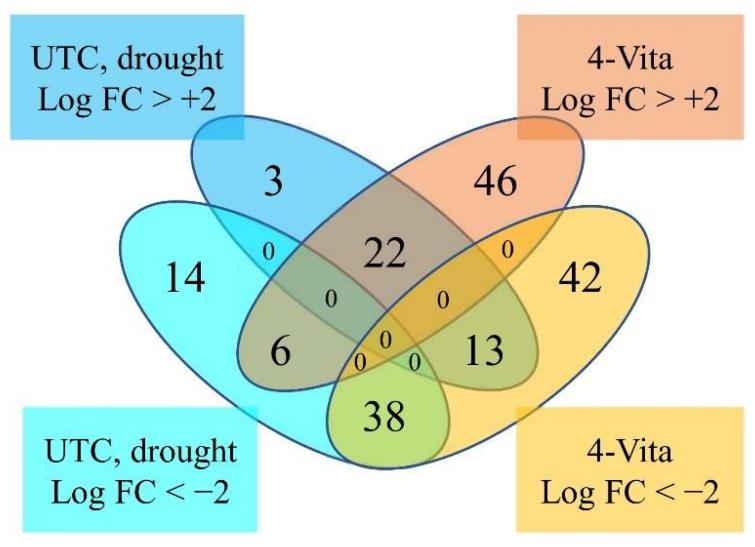Tomatoes (Solanum lycopersicum) have long served as a model organism for studying plant biology. Their relatively compact genome and well-understood genetics make them ideal candidates for research in various domains, including genetics, physiology, and metabolomics.
Tomato metabolite analysis delves into the intricate world of tomato metabolism, providing valuable insights into the diverse array of small molecules that govern the growth, development, and responses of this agriculturally and nutritionally significant crop.
At its core, tomato metabolite analysis seeks to unravel the metabolic processes within tomatoes, shedding light on the complex web of biochemical reactions that give rise to the tomato's flavor, color, and nutritional content. This holistic perspective allows scientists to comprehensively study the tomato's molecular makeup. Tomato metabolite analysis employs cutting-edge analytical techniques, including LC-MS and GC-MS. Through metabolite analysis, we can gain the ability to profile the entire spectrum of metabolites present in tomatoes.
Solanum lycopersicum (Tomato) Analysis Projects We Provide
Metabolite Profiling: Our advanced metabolomics analysis enables the thorough profiling of tomato metabolites. We identify and quantify a broad spectrum of compounds, including sugars, organic acids, amino acids, lipids, and secondary metabolites like carotenoids and flavonoids.
Metabolic Pathway Exploration: We delve into the interconnected metabolic pathways operating within tomatoes. Our analysis uncovers the biosynthesis and regulation of metabolites, providing insights into the pathways responsible for flavor, color, and nutritional properties.
Metabolite Quantification: Accurate quantification of metabolites is a pivotal aspect of our service. We determine the concentrations of specific metabolites using cutting-edge analytical techniques such as mass spectrometry (MS) and high-performance liquid chromatography (HPLC).
Metabolic Changes Under Stress: Understanding how tomatoes respond to environmental stressors, pathogens, or genetic modifications is a focal point of our analysis. We identify changes in metabolite profiles under various conditions, contributing to stress tolerance and crop improvement, and investigate how Solanum lycopersicum responds to abiotic and biotic stressors, shedding light on its resilience and adaptation mechanisms.
Biomarker Discovery: Our metabolomics analysis aids in the discovery of biomarkers—specific metabolites associated with certain traits or conditions. Biomarkers have applications in breeding, quality control, and disease diagnosis.
Tomato Flavor Profiling: Understanding the complex and delightful flavors of tomatoes is a fundamental aspect of our analysis projects. We utilize cutting-edge techniques to identify and quantify the volatile compounds responsible for the characteristic aroma and taste of tomatoes. Our flavor profiling services enable researchers and food industry experts to enhance the sensory qualities of tomato-based products.
Genetic Marker Identification: Through genetic marker identification projects, we assist breeders in selecting tomato varieties with desirable traits. Our analysis services pinpoint genetic markers associated with traits such as disease resistance, fruit size, and color.
Varietal Characterization: We employ metabolomics to distinguish between different tomato varieties based on their unique metabolite profiles. This aspect is vital for breeders and cultivar selection.
Quality Control in Food Industry: For the food industry, our metabolomics analysis ensures the quality and consistency of tomato-based products. We monitor parameters like acidity, sugar content, and pigment levels to meet industry standards.
Nutritional Evaluation: Our service provides a comprehensive evaluation of the nutritional composition of tomatoes. We offer data on vitamins, minerals, antioxidants, and other bioactive compounds, aiding in informed dietary decisions and product development.
Tomato Metabolomics Analysis Techniques
Liquid Chromatography-Mass Spectrometry (LC-MS/MS): This is one of the most commonly used analytical methods in tomato metabolomics research. It combines liquid chromatography (LC) and mass spectrometry (MS) techniques, often utilizing high-performance LC systems such as the Agilent 1290 Infinity II LC. Mass spectrometers like the Thermo Fisher Q Exactive series are employed for precise identification and quantification of metabolites.
Gas Chromatography-Mass Spectrometry (GC-MS): GC-MS technology, employing instruments such as the Agilent 7890B GC coupled with mass spectrometers like the Agilent 5977B MSD, is suitable for the analysis of volatile and non-volatile compounds. It is particularly useful for detecting aroma compounds and other volatile metabolites in tomatoes.
High-Performance Liquid Chromatography (HPLC): HPLC technology, often utilizing systems like the Shimadzu Nexera X2, is widely used in tomato metabolomics, especially for the quantification of pigment metabolites such as carotenoids, flavonoids, and polyphenols. Detection is commonly performed using diode array detectors (DAD) or photodiode array detectors (PDA).
Data Analysis and Bioinformatics: In addition to experimental techniques, tomato metabolomics research involves extensive data analysis and bioinformatics work. Tools such as XCMS, MetaboliteAtlas, and MetaboAnalyst are used for data processing, metabolite identification, pathway analysis, and metabolic network modeling.
 Workflow for Metabolomics Service
Workflow for Metabolomics Service
Sample Requirements for Tomato Metabolomics
| Sample Type |
Sample Quantity |
| Fresh Tomato Tissue |
Approximately 100 grams per replicate |
| Extracts |
Typically requires about 5-10 milliliters (mL) |
| Tomato Juice |
Approximately 10-50 milliliters (mL) depending on analysis needs |
| Tomato Products |
Varies based on product type and analysis requirements |
| Dried Tomato Samples |
Typically around 5-10 grams |
| Plasma/Serum/Urine |
Varies based on analysis needs, usually ranging from milliliters to tens of milliliters |
Case. Effect of 4-Vita Biostimulant on Tomato Plants Under Drought Stress: A Comprehensive Metabolomics Study
Background
Climate change poses a significant threat to global food security, with drought being one of the key abiotic stresses affecting plant growth and crop productivity. Understanding how biostimulants, such as 4-Vita, influence plant responses to drought stress is crucial for sustainable agriculture. Biostimulants have the potential to modulate plant physiology and metabolism to enhance drought tolerance.
Samples
Tomato plants subjected to drought stress were used as the experimental samples. The study included both untreated drought-stressed plants (UTC, drought) and drought-stressed plants treated with the 4-Vita biostimulant.
Technological Methods
The study employed a range of technical methods to investigate the response of tomato plants to drought stress and the impact of 4-Vita biostimulant. These methods included:
Plant Morphological and Physiological Assessment: Wilting levels, fresh biomass, and visual evaluations of plant health were conducted at various time points during the experiment to track the response to drought stress and biostimulant treatment.
Photosynthetic Activity Evaluation: Different photosynthetic parameters, including Fv/Fm, Ψo, φEo, and others, were measured to assess the impact on photosynthesis.
Parameters LLPhP at 4DAT: Various morphological parameters were analyzed, including the greenness index, NDVI, NPCI, PSRI, digital biomass, height, leaf angle, leaf area index, leaf inclination, and leaf area.
Metabolomic Analysis: Untargeted metabolomics was performed using UHPLC-ESI/QTOF-MS to analyze 572 metabolites. An ANOVA statistical analysis and fold-change analysis were employed to identify significant changes in metabolite profiles.
Metabolite Pathway Analysis: The study examined the impact of drought stress and 4-Vita treatment on specific biochemical pathways, including fatty acid and lipid biosynthesis, secondary metabolite biosynthesis, phytohormone biosynthesis, cofactor biosynthesis, and other pathways.
Results
- Drought stress affected plant morphology, physiology, and metabolite profiles, with noticeable changes in wilting, fresh biomass, and photosynthetic parameters.
- 4-Vita biostimulant application induced specific changes in metabolite profiles, particularly in pathways related to fatty acids, lipids, secondary metabolites, and phytohormones.
- Lipid composition, including phosphatidylglycerol (PG), MGDG, and DGDG, showed significant alterations in response to drought stress and 4-Vita treatment.
- Secondary metabolites, such as nitrogen-containing compounds, phytoalexins, and alkaloids, were modulated differently in treated and untreated plants.
- 4-Vita treatment led to an increase in key phytohormones associated with drought tolerance, including brassinosteroids and gibberellins, while affecting other phytohormones negatively.
 Metabolic biosynthetic processes modulated in tomato leaves following the treatments with 4-Vita under drought conditions, compared to untreated control (UTC).
Metabolic biosynthetic processes modulated in tomato leaves following the treatments with 4-Vita under drought conditions, compared to untreated control (UTC).
 Venn diagram showing up- and downaccumulated metabolites under either well-watered or drought conditions
Venn diagram showing up- and downaccumulated metabolites under either well-watered or drought conditions
Reference
- Sudiro, Cristina, et al. "A phenomics and metabolomics investigation on the modulation of drought stress by a biostimulant plant extract in tomato (Solanum lycopersicum)." Agronomy 12.4 (2022): 764.


 Workflow for Metabolomics Service
Workflow for Metabolomics Service Metabolic biosynthetic processes modulated in tomato leaves following the treatments with 4-Vita under drought conditions, compared to untreated control (UTC).
Metabolic biosynthetic processes modulated in tomato leaves following the treatments with 4-Vita under drought conditions, compared to untreated control (UTC). Venn diagram showing up- and downaccumulated metabolites under either well-watered or drought conditions
Venn diagram showing up- and downaccumulated metabolites under either well-watered or drought conditions

